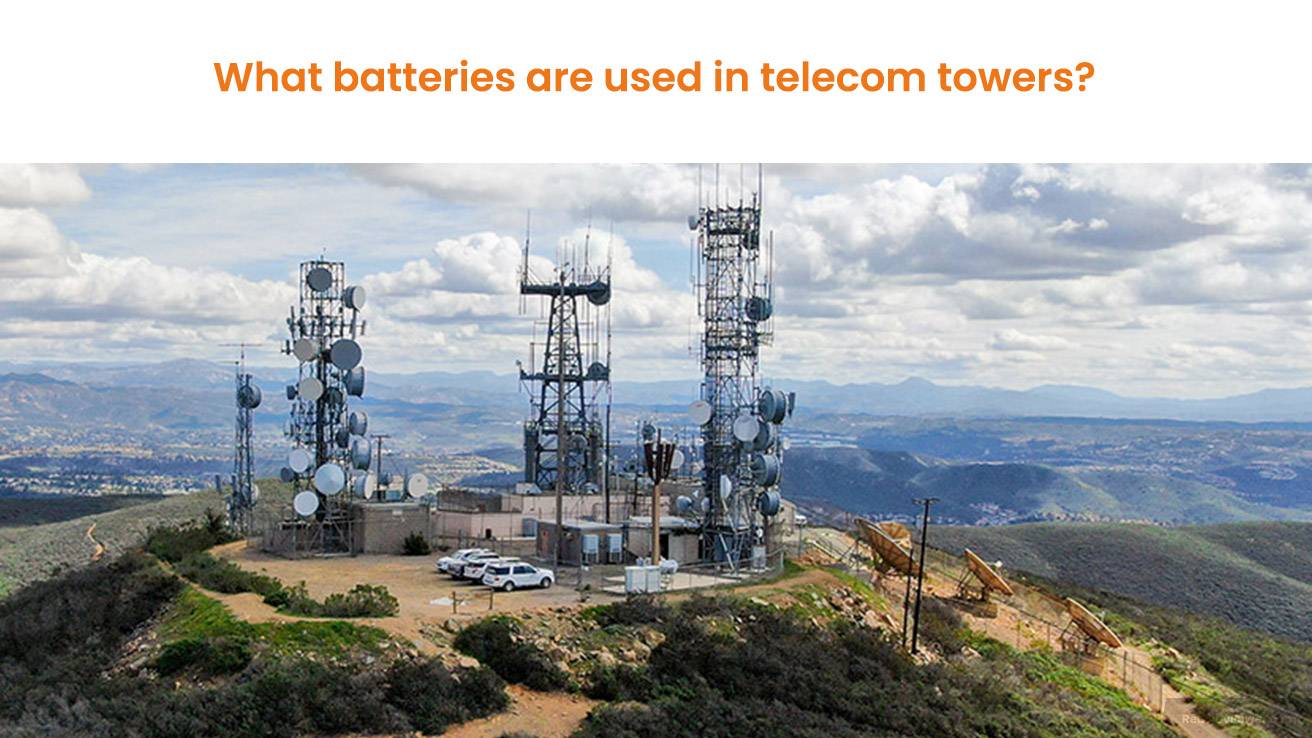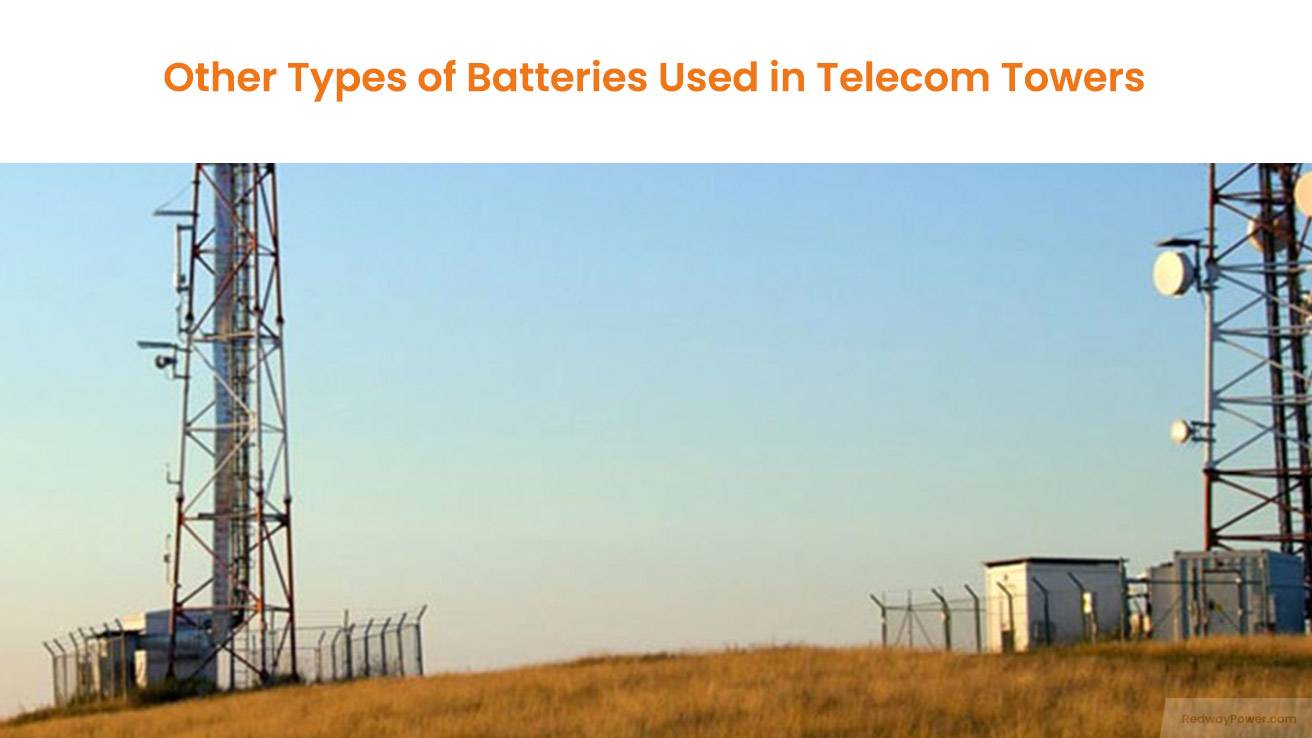Telecom towers, towering above cities, are crucial for our digital connectivity. These structures rely on batteries to stay operational during power outages, ensuring uninterrupted communication. In this blog post, we’ll explore the types of batteries used, their pros and cons, and recent innovations in telecom tower battery technology.
Importance of Batteries in Telecom Towers
Telecom towers are essential for our connectivity, relying on batteries to stay operational during power outages. The importance of batteries in these towers cannot be overstated, providing backup power to critical equipment and ensuring continuous communication during emergencies.
- Emergency Preparedness: Batteries in telecom towers serve as crucial backup power sources during grid failures or interruptions. In areas struck by natural disasters, these batteries enable emergency services to function smoothly, ensuring uninterrupted communication.
- Voltage Stabilization: Beyond emergencies, batteries play a vital role in stabilizing voltage supplied to telecom equipment. This prevents sudden surges or drops in electricity, protecting sensitive components and ensuring consistent performance.
- Battery Types and Considerations: Various battery types cater to telecom tower needs. Lead-acid batteries, cost-effective and durable, require regular maintenance. Lithium-ion (Li-ion) batteries are gaining popularity due to higher energy density, longer lifespan, and faster charging capabilities. Other options like nickel-cadmium (Ni-Cd), nickel-metal hydride (Ni-MH), and flow-cell technologies have specific advantages.
- Choosing the Right Battery: When selecting batteries for telecom towers, considerations include capacity based on load calculations, operating temperature range, expected service life, maintenance needs, safety features, compatibility with infrastructure, and space constraints.
- Ongoing Technological Advancements: As technology evolves, ongoing trends and innovations in battery technology continue to shape the landscape, providing new opportunities for improved efficiency and performance in powering telecom towers.
Types of Batteries Used in Telecom Towers
Selecting the right battery is crucial for powering telecom towers, ensuring uninterrupted communication during outages. Let’s explore the key types of batteries used in these towers.
- Lead-Acid Batteries:
- Widely used for decades due to low cost and high energy density.
- Despite limited cycle life and sensitivity to extreme temperatures, they remain popular for their reliability.
- Lithium-Ion Batteries:
- Gaining popularity for telecom towers with higher energy density and longer lifespan.
- Advantages include a smaller footprint, easy integration, but considerations include higher upfront costs and safety concerns.
- Nickel-Cadmium (Ni-Cd) Batteries:
- Known for durability but with lower energy density compared to lithium-ion.
- Used as an alternative with specific strengths in certain applications.
- Considerations in Battery Selection:
- Factors like capacity, environmental conditions, maintenance needs, space availability, safety, and budget constraints are crucial when choosing the right battery for a telecom tower application.
- Ongoing Research and Innovation:
- To meet evolving demands in the telecommunications industry, ongoing research focuses on innovative battery technologies. These aim to address current limitations while enhancing performance metrics such as energy storage capacity, efficiency, and overall lifespan.
Lead-Acid Batteries: Benefits and Drawbacks
Lead-acid batteries have been a go-to choice for powering telecom towers, known for their affordability and reliability. Let’s explore the key aspects of these batteries, including their advantages and limitations.
- Affordability and Power Delivery:
- Lead-acid batteries stand out for their low cost, making them a cost-effective solution in budget-constrained areas.
- Their ability to deliver high surge currents makes them suitable for applications requiring immediate power delivery.
- Drawbacks:
- Despite their advantages, lead-acid batteries have drawbacks, including considerable weight and size.
- Limited cycle life compared to alternatives like lithium-ion is a notable limitation.
- Safety and Maintenance:
- Proper ventilation is essential due to gas release during charging, necessitating safety measures.
- Regular maintenance and ample space for installation are required, contributing to their overall drawbacks.
- Enduring Popularity:
- Despite drawbacks, lead-acid batteries remain widely used in telecom towers, thanks to their affordability and proven reliability.
- However, the rise of alternative options like lithium-ion, with higher energy density and longer lifespan, is reshaping the landscape.
Lithium-Ion Batteries: Advantages and Limitations
Lithium-ion batteries have gained popularity in diverse industries, including telecom towers, for their unique advantages. Let’s explore the key reasons behind their increasing preference in powering critical infrastructure.
- High Energy Density:
- Lithium-ion batteries stand out for their ability to store a significant amount of energy in a compact and lightweight design.
- Ideal for telecom towers requiring long-lasting power solutions, these batteries excel in providing efficient energy storage.
- Extended Lifespan and Durability:
- With a longer lifespan compared to other battery types, lithium-ion batteries offer reliable power for an extended period, minimizing the need for frequent replacements or maintenance.
- Their durability makes them well-suited for remote locations where regular upkeep may pose challenges.
- Fast Charging Capabilities:
- Lithium-ion batteries feature fast charging capabilities, ensuring quick recharge times.
- This attribute allows for uninterrupted power supply during grid outages or fluctuations in electricity availability.
- Limitations and Cost Consideration:
- Despite their advantages, lithium-ion batteries come with higher upfront costs compared to traditional lead-acid batteries.
- However, the long-term benefits and efficiency often justify the initial investment.
- Safety Concerns:
- It’s important to note safety concerns related to thermal runaway and overheating risks, emphasizing the need for proper management and monitoring.
- Efficient and Reliable Choice:
- Despite limitations, the overall advantages of lithium-ion batteries make them an excellent and efficient choice for reliably powering telecom towers.
Other Types of Batteries Used in Telecom Towers
Beyond lead-acid and lithium-ion batteries, various other battery types are utilized in telecom towers. Let’s explore these alternatives, considering their unique features and applications.
- Nickel-Cadmium (NiCd) Batteries:
- NiCd batteries strike a balance between cost, performance, and lifespan.
- With a long history of use, they remain a reliable choice for telecom tower applications.
- Nickel-Metal Hydride (NiMH) Batteries:
- Known for high energy density and extended lifespan compared to NiCd batteries.
- NiMH batteries are commonly employed in telecom towers, offering efficient energy storage.
- Fuel Cells:
- Fuel cells, converting chemical energy into electricity, provide a clean and efficient power source.
- While they offer potential benefits, high costs and limited availability currently limit widespread adoption for telecom towers.
- Flow Batteries:
- Flow batteries use external tanks for electrolyte solutions, allowing scalability and long cycle life.
- Experimentation with flow batteries in telecom towers is underway due to their unique design.
- Emerging Technologies:
- Ongoing experimentation involves technologies like solid-state batteries and graphene-based supercapacitors for telecom towers.
- These innovations could offer advancements in performance and scalability.
- Choosing the Right Battery:
- Selecting the suitable battery for a telecom tower involves considerations such as cost-effectiveness, reliability, maintenance requirements, available space, environmental conditions, and expected load demands.
- As technology progresses, new battery types specifically designed for telecom applications may emerge, expanding the range of options available.
Factors to Consider When Choosing Batteries for Telecom Towers
Selecting the right batteries for telecom towers is critical for seamless operations. With various options available, considering specific factors is key to ensuring reliable and uninterrupted power supply.
- Battery Capacity:
- High capacity ensures longer backup time during power outages, reducing the risk of service interruptions for telecom towers.
- Evaluating the required capacity aligns with the operational needs of the towers.
- Battery Lifespan:
- Longer lifespans are crucial for remote telecom tower locations with limited accessibility for maintenance or replacement.
- Opting for batteries with extended lifespans helps minimize downtime and reduce overall maintenance costs.
- Temperature Tolerance:
- Telecom towers face extreme weather conditions; choosing batteries with high temperature tolerance ensures reliable performance in harsh environments.
- This factor is vital for maintaining battery efficiency and effectiveness over time.
- Charging Efficiency:
- Batteries with high charging efficiency contribute to optimized energy usage and lower operational costs.
- Faster recharging times enhance the responsiveness of telecom towers during power-related challenges.
- Total Cost of Ownership (TCO):
- Beyond initial purchase costs, evaluating the TCO helps determine the long-term economic impact.
- Assessing ongoing maintenance expenses and comparing them with the expected lifespan ensures cost-effective battery choices for telecom towers.
Trends and Innovations in Battery Technology for Telecom Towers
As technology rapidly evolves, so does the demand for advanced battery solutions in telecom towers. Let’s explore the latest trends and innovations shaping the future of battery technology in this critical infrastructure.
- Lithium-Sulfur Batteries:
- Emerging with higher energy density than traditional lithium-ion batteries.
- Promising longer lifespan and reduced weight, making them a notable choice for telecom tower applications.
- Graphene-Based Batteries:
- Graphene’s outstanding electrical conductivity and strength are being explored for battery technology.
- Potential improvements in efficiency and reduced charging times could revolutionize telecom tower battery performance.
- Hybrid Energy Systems:
- Combining renewable sources like solar panels or wind turbines with backup batteries for continuous power supply.
- Addresses sustainability concerns while ensuring reliability, even during periods of low renewable energy generation.
- Advanced Battery Management Systems (BMS):
- Smart BMS, incorporating artificial intelligence algorithms, optimizes battery usage and enhances efficiency.
- Crucial for monitoring and controlling battery performance, preventing failures due to overcharging or overheating.
- Liquid Metal Batteries:
- Utilizing molten metals and a liquid electrolyte layer for ion flow.
- Suitable for outdoor environments with high temperatures, such as those where telecom towers are located.
Conclusion: These trends highlight a promising future for battery technology in powering telecom towers. Ongoing research focuses on sustainable options with improved storage capacity and extended lifespans, paving the way for more innovative solutions in the coming years.



